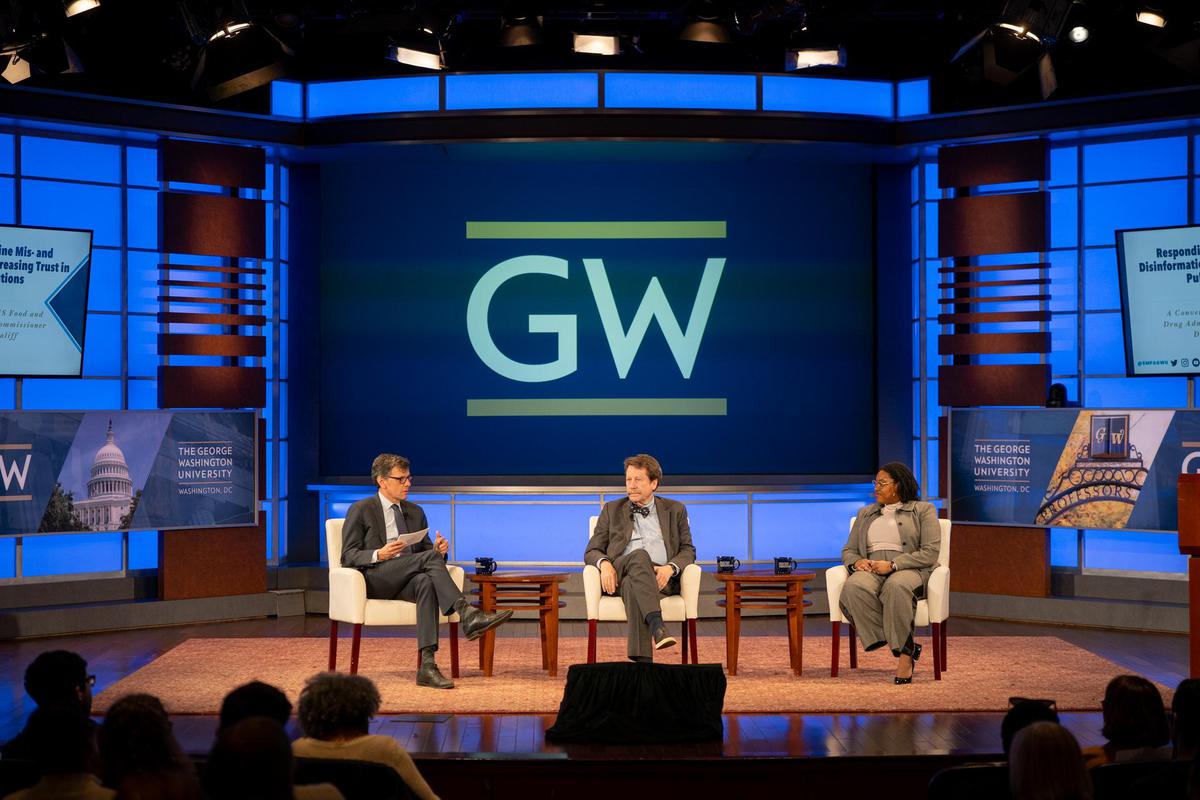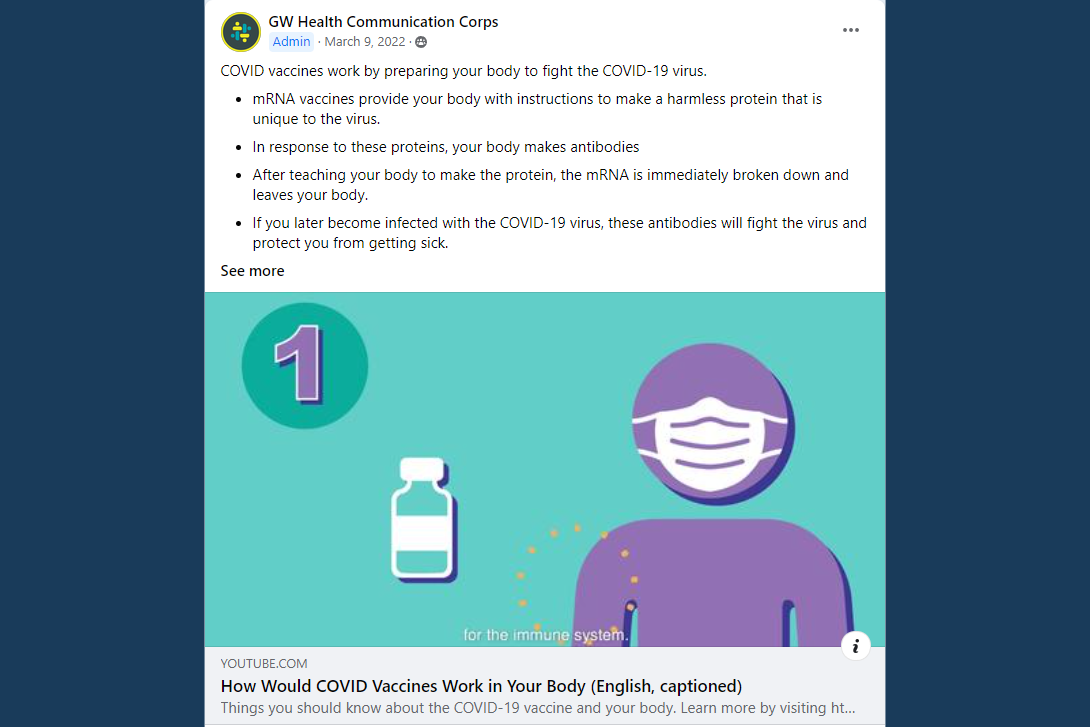The extreme view of someone who works for the Food and Drug Administration (FDA), according to current Commissioner Robert M. Califf, is of a nondescript bureaucrat who sits at a desk in a backroom. They don’t talk to anyone except themselves. Some company tosses data over the transom. They read it and decide.
“There’s no single person at FDA that makes a decision about a medical product,” Califf said. “It’s done by a team of people who are constantly interacting with dissenting voices so that anybody who disagrees leaves a public record,” he said, pointing out that staff deals with a body of knowledge about underlying medical products, food and tobacco that is scientifically constantly evolving.
George Washington University’s School of Media and Public Affairs hosted a discussion with Califf titled “Responding to Online Mis- and Disinformation and Increasing Trust in Public Institutions” that was led by SMPA Director Peter Loge.
The SMPA director described Califf as a friend of the highest integrity, a recognized expert in cardiology medicine who also served as professor of medicine at Duke University. Aaliyah Guzman, a junior political communications major who closely follows social media also participated in the panel Tuesday night at Jack Morton Auditorium.
Opening the discussion, Loge said a student who volunteered a question for the commissioner asked when the agency would stop lying about the contents of food in the United States, implying a level of distrust in government institutions.
“Technically, we can’t tell you exactly what is in your food,” Califf said. “That is done by the companies that make the food, they have a requirement [to do so]. If you look at health misinformation and who people trust, the closer you get to somebody they know, the more they trust the same information.”
When you add social media to the mix, Califf said, it is possible to have a huge impact on the public for social good and not evil, but no one has quite figured out how to do it. He gave the example of a tweet the FDA put out during the pandemic that said, “Don’t be a horse. Don’t be a cow. Don’t take Ivermectin. Stop it.” It went viral and was effective, but a group of doctors who were prescribing Ivermectin to treat COVID sued the agency for interfering with the practice of medicine, a claim that was supported by the Fifth U.S. Circuit Court of Appeals in Texas and has moved to a higher court.
It is a challenge the FDA is working on hard, he said, but is an all-society issue that also involves universities like GW.
He noted the declining life expectancy in the United States. “The worst of any high-income country, and we’re spending more than $4.3 trillion for the worst health care outcomes,” said Califf. “It’s not because we don’t have the best devices…the U.S. is number one at inventing new things. But we’re the worst at using the new things that we have.”
In order to rebuild trust using social media, Guzman said, “Trust is something that is earned and at this point needs to be rebuilt. It comes from ownership and really stepping back recognizing the ways in which communities haven’t been heard.”
“TikTok…can help do that,” she said, “but the real priority needs to be repairing the damage that was done, admitting the damage that was done by reaching into the community and saying, ‘How can we best support whatever it is you need.’”
Loge noted that universities are bringing in social media influencers to train them how to talk to people about health issues, referring specifically to a program Harvard School of Public Health has undertaken on communicating about mental health issues. He asked Califf whether the government could pursue such channels.
“We can talk about it, lay out the facts in areas where we traditionally give opinions like risk or benefits of drugs or a device, and what’s on a [food] label, what’s considered healthy,” said Califf. “We can try to communicate better with the people … give them suggestions but it’s up to them as to what they want to do.”





